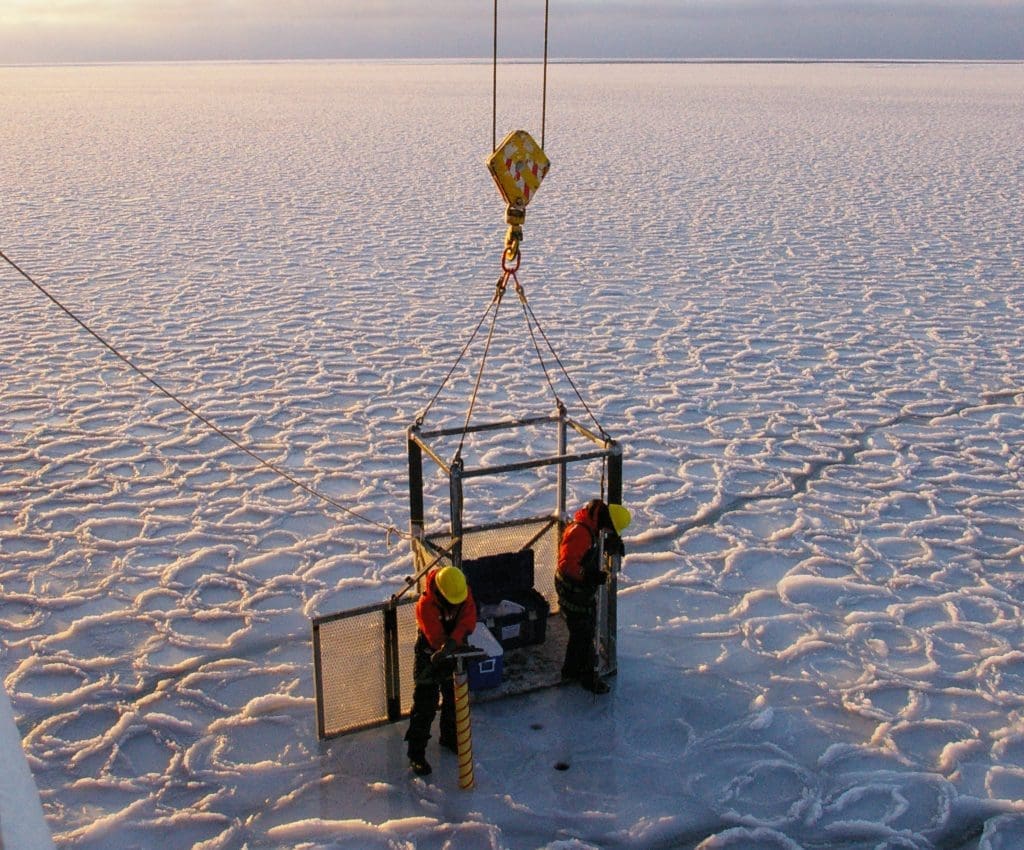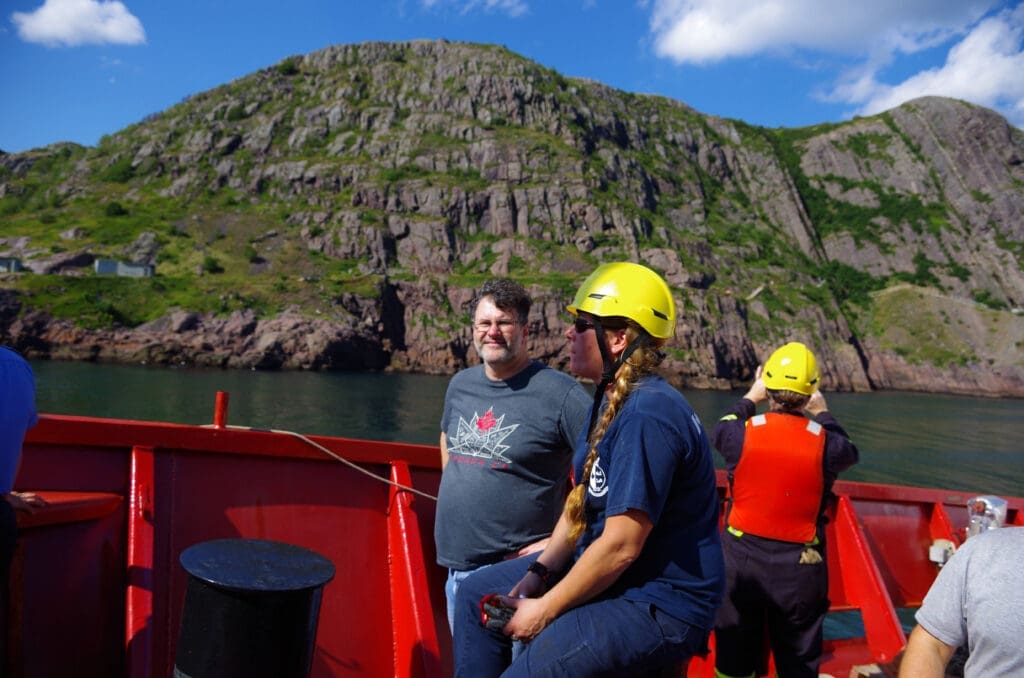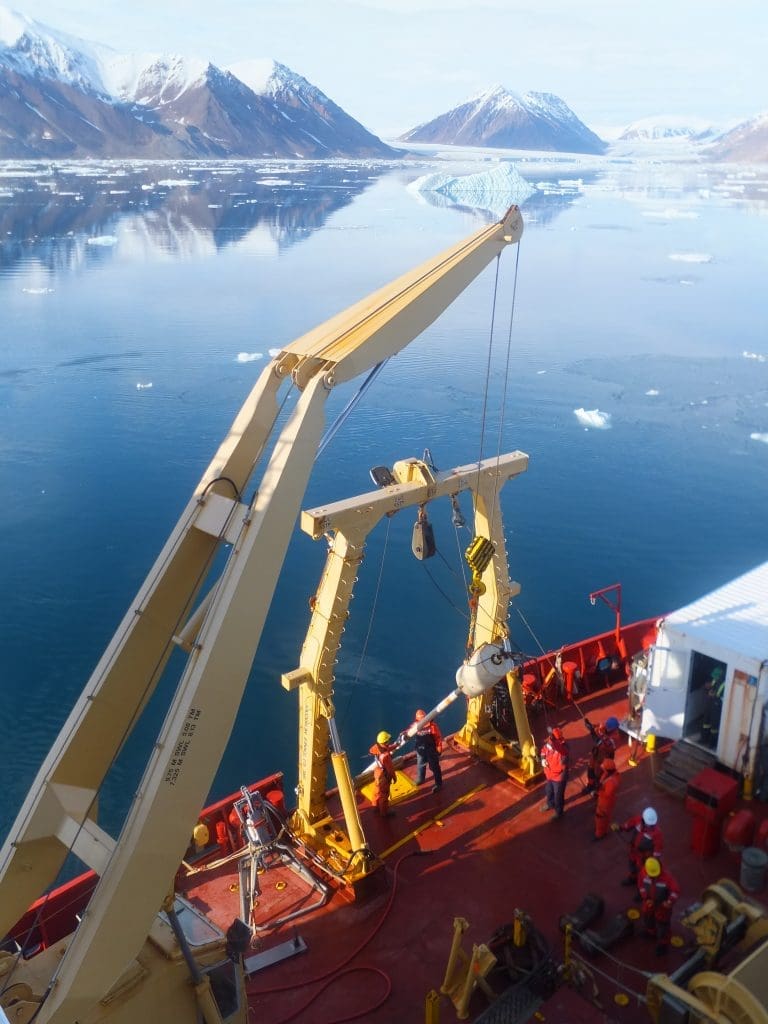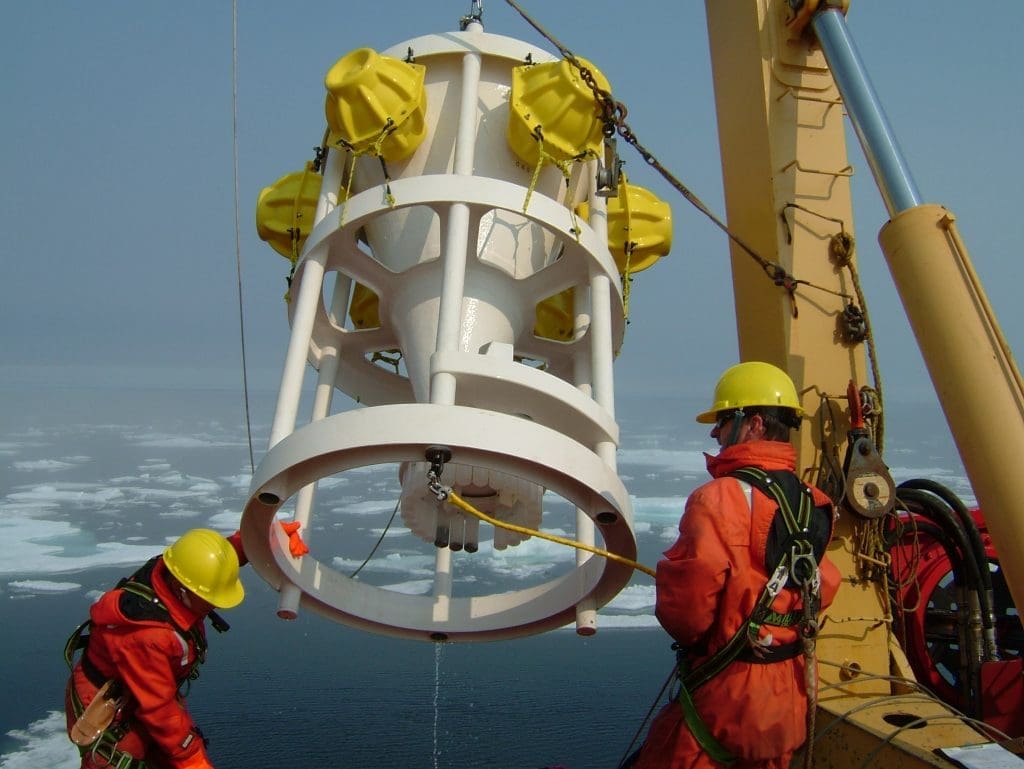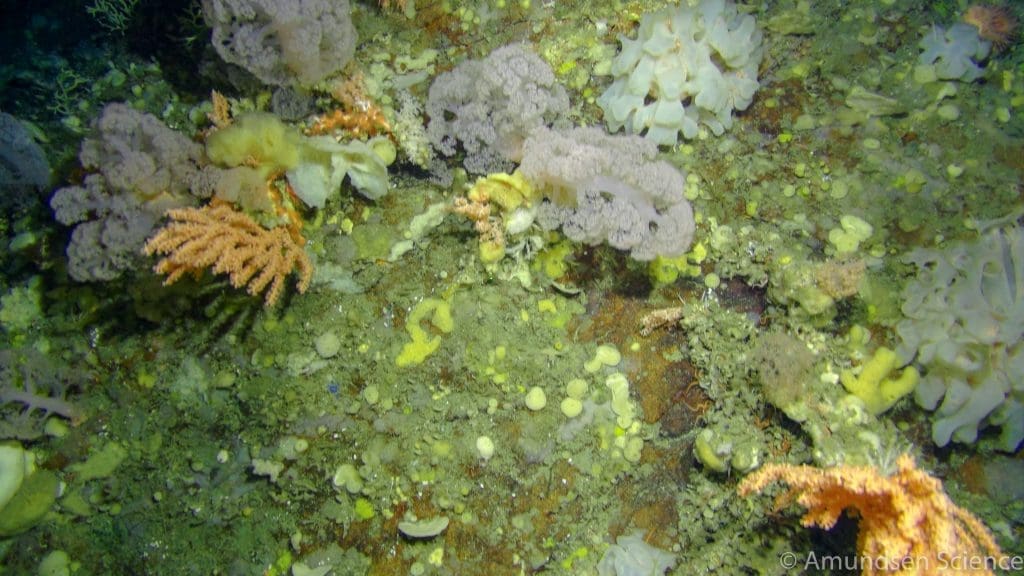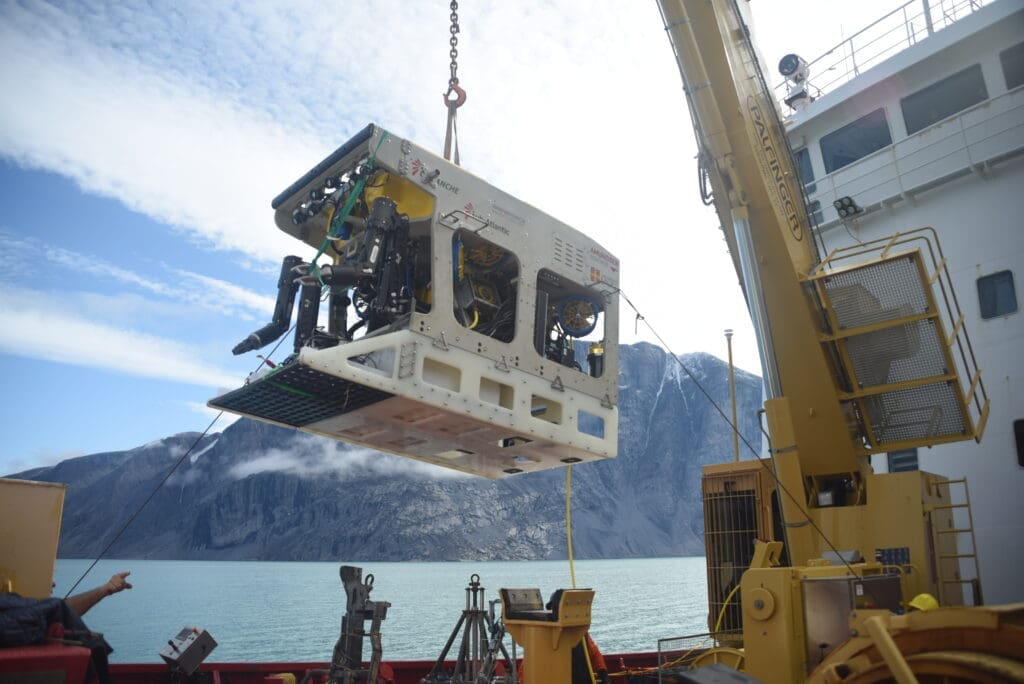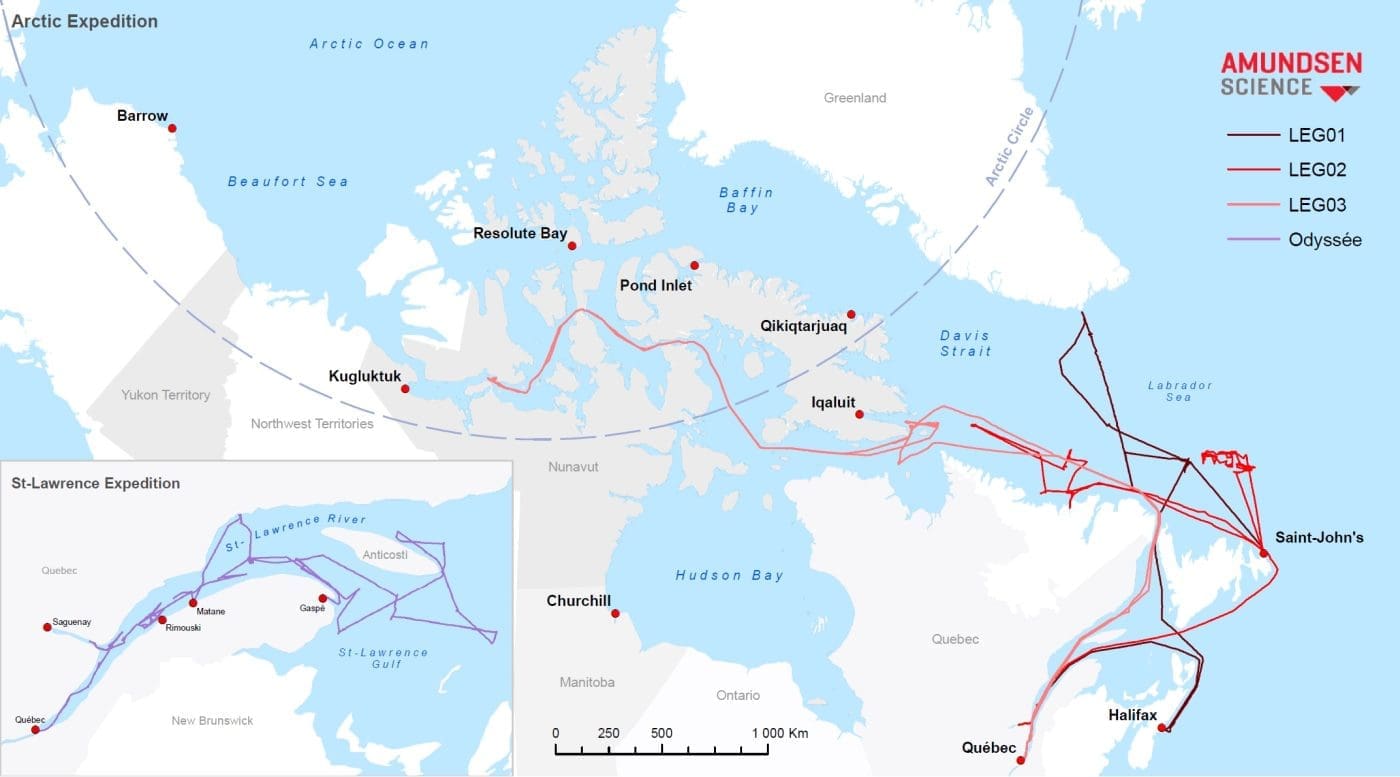
2020 Expedition

During the year 2020, two expeditions were undertaken:
- The Odyssée St-Laurent Expedition from February 26th to March 14th;
- The Annual Amundsen Expedition from July 16th to October 27th.
The Odyssée St-Laurent Expedition occurred within the St. Lawrence estuary and organized by Quebec Maritime Network to conduct their specific research projects.
The 2020 Amundsen Expedition has been affected by the COVID-19 global pandemic, resulting in the suspension of all scientific activities in the Arctic. Although, the expedition allowed 37 multidisciplinary scientists from national research teams to study the marine and coastal environments of the Canadian and Greenlandic Atlantic Ocean.
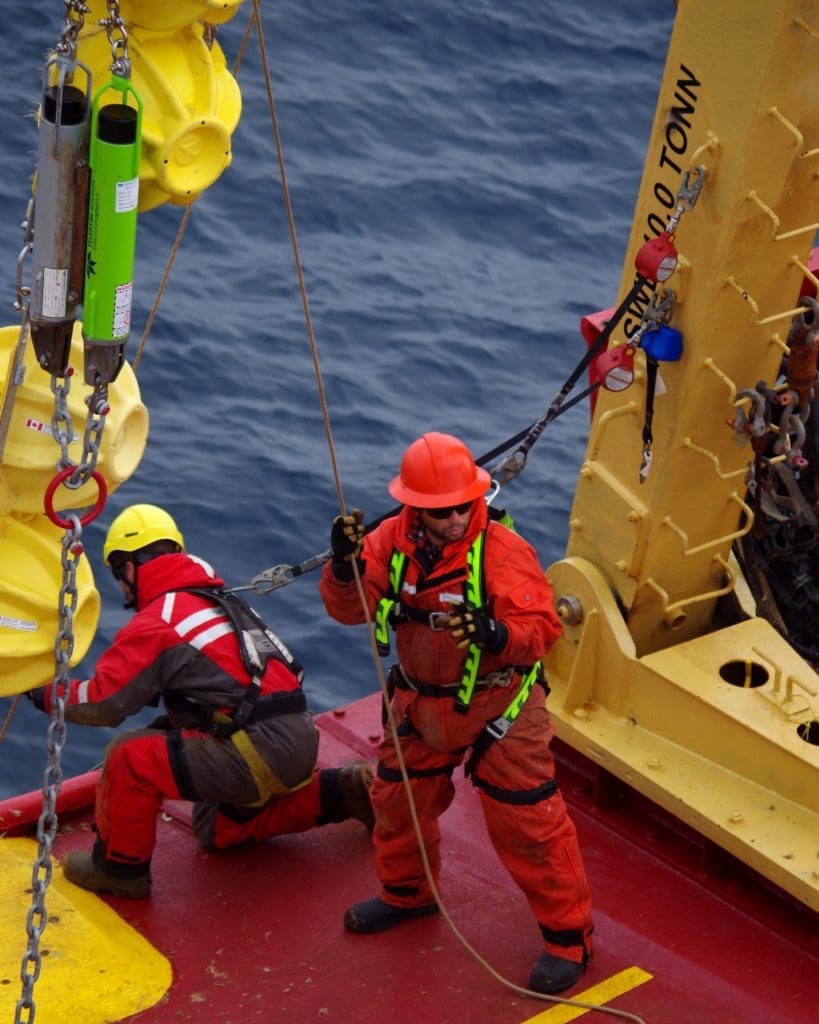
96
days at sea
16 174
nautical miles travelled
37
scientists
2020 ODYSSÉE ST-LAURENT EXPEDITION – QUÉBEC MARITIME NETWORK
(8 – 24 February) Quebec City to Quebec City
This expedition took place in the estuary and Gulf of St. Lawrence. Around 30 scientists were on board and sampled 32 stations. This 15-day expedition was conducted when the ship was primarily dedicated to icebreaking operations.The team of scientists operated in an opportunistic manner, using the vessel for research purposes whenever possible, in between two icebreaking or escort missions.
LEG 1 – AZOMP
(16 July – 13 August 2020) Québec City to St. John’s
The first Leg of this expedition was dedicated to the Atlantic Zonal Off-Shelf Monitoring Program (AZOMP). This long-term monitoring program led by Fisheries and Oceans Canada in partnership with Amundsen Science and several Canadian universities, including Dalhousie University, University of Manitoba, Université du Québec à Rimouski, University of Alberta, and Université Laval, is centered around the annual survey of the physical, chemical, and biological properties of a long oceanographic transect (named AR7W) running from the Labrador coast to Greenland. No less than 70 oceanographic stations up to 3500 meters deep were visited.
LEG 2A – NRCan
(13 – 24 August) St. John’s to St. John’s
This Leg was supporting the Natural Resources Canada Marine Geoscience & Marine Spatial Planning program, involving seafloor sediment survey and deep-sea sampling operations at key geological sites of the Northeast Newfoundland Shelf and Slope. Key sampling targets were located in the West Orphan Basin within Canada’s Exclusive Economic Zone to support a better understanding of the offshore/geological resource potential of the region.
LEG 2B – ISECOLD
(24 August – 9 September) St. John’s to Québec City
This Leg was supporting the Integrated Studies and Ecosystem Characterization of the Labrador Sea Deep Ocean (ISECOLD) program led by Dalhousie University in collaboration with Memorial University, Fisheries and Oceans Canada, University of Calgary, and several other institutions, that aim to characterize the Northern Labrador Sea and coastal environments using a colocated sampling of several different ecosystem components (fish, plankton, benthos, water, physical environment, mapping, etc.). In particular, the program involved the recovery and redeployment of two long-term moorings in Hatton Basin and extensive surveys of the Makkovik Bank and Nain marine ecosystems along the Labrador coast.
LEG 2C – ROV Sea Trials
(17 – 22 September) Québec City to Québec City
This Leg focused on Amundsen Science’s new light work-class comanche ROV integration and sea trials. The trials’ operations included undertaking video surveys, high-resolution still photography of benthic habitats, the collection of coral and other benthic fauna samples, as well as sediment sampling using precisely-positioned sediment push cores.
LEG 3 – CHS
(24 September – 27 October) Québec City to Québec City
This Leg was conducted concomitantly with regular Coast Guard operations in the southern Arctic and involved dedicated science operations on an opportunity basis. Data obtained from the campaign directly fed into updating existing bathymetric charts supporting the safer navigation of public and privately-owned vessels in Canadian waters.
